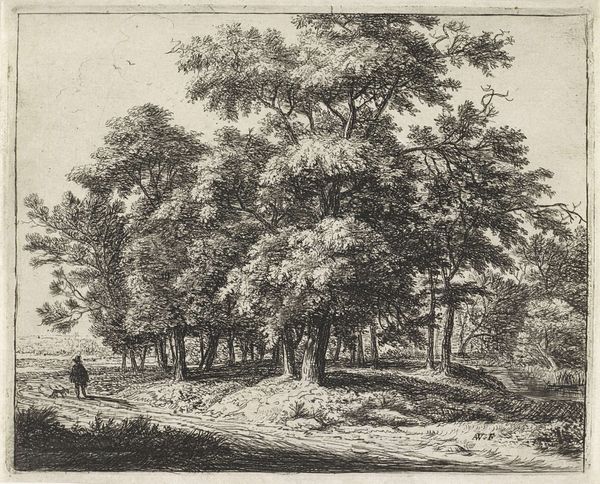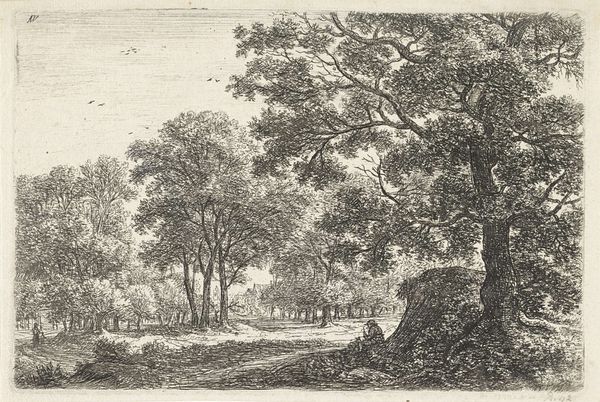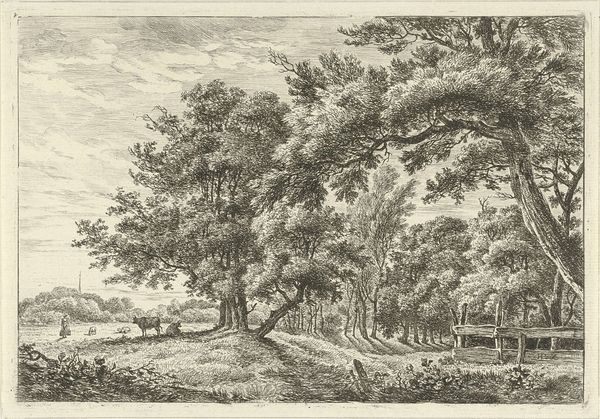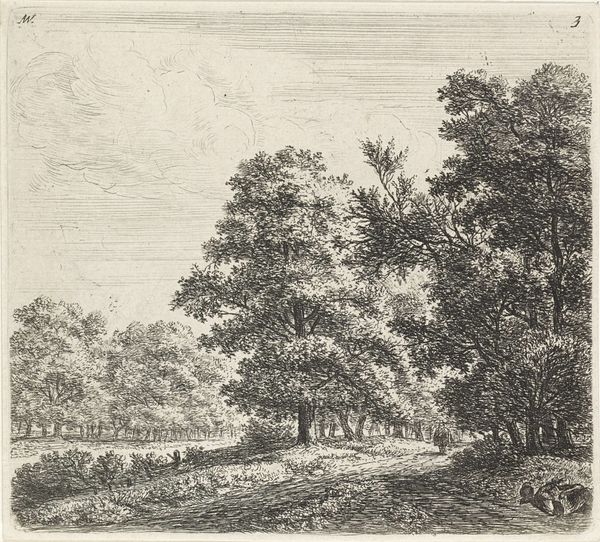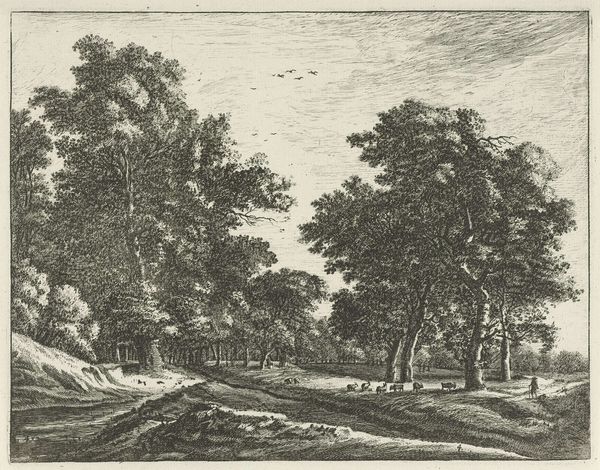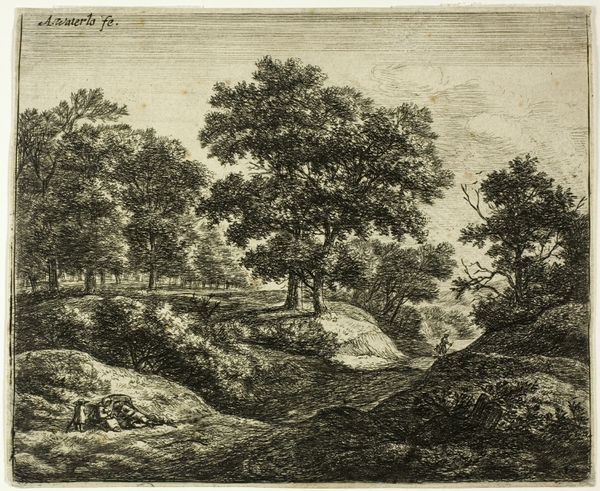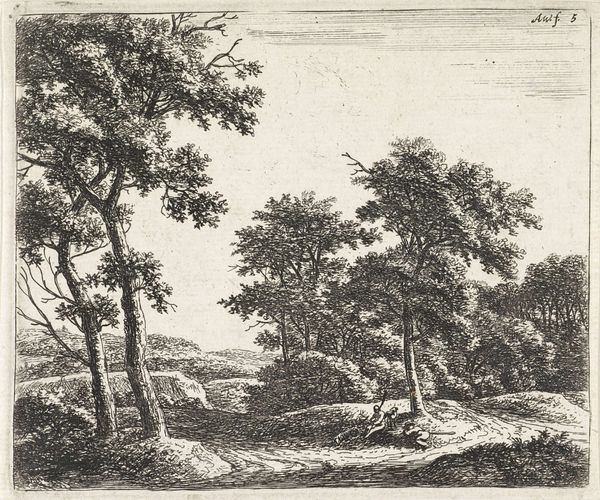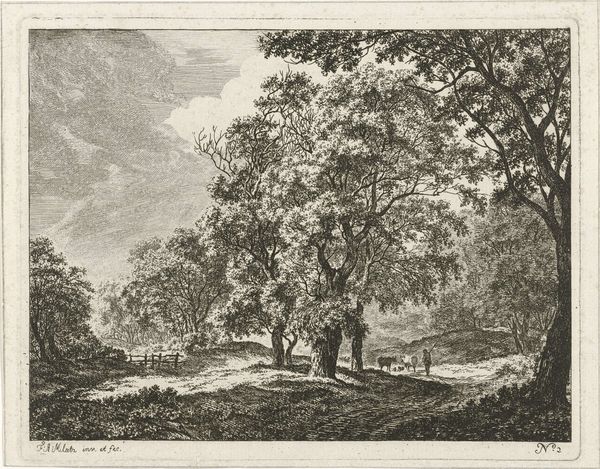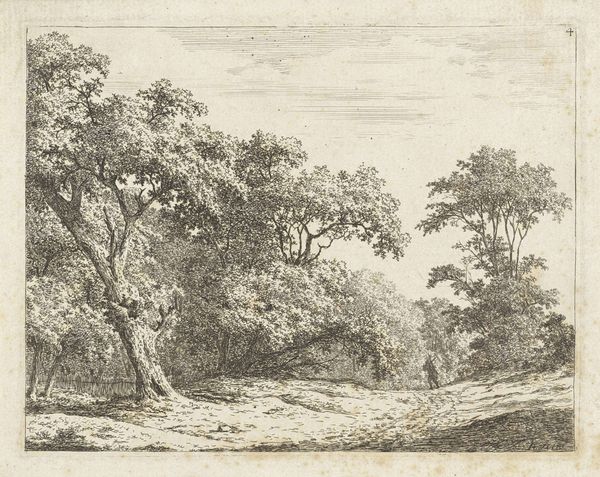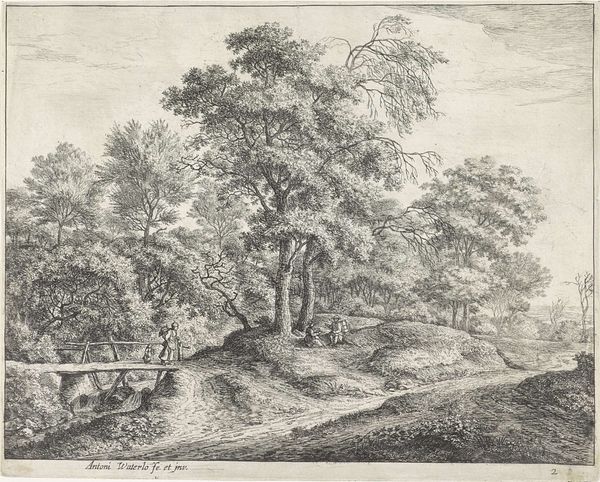
drawing, etching
#
drawing
#
baroque
#
dutch-golden-age
#
etching
#
landscape
#
line
Dimensions: height 135 mm, width 167 mm
Copyright: Rijks Museum: Open Domain
Curator: Before us is "Marskramer bij een waterpartij," or "Peddler by a Pool" by Anthonie Waterloo. This etching, part of the Rijksmuseum collection, was likely created between 1630 and 1717 during the Dutch Golden Age. Editor: It’s immediately striking how rich and detailed the texture is for such a small-scale print. You can almost feel the humidity in the air, look how tightly worked those marks are! Curator: Yes, Waterloo was a master of etching, achieving a painterly quality through intricate lines and varied shading. Landscape prints such as this met growing demand outside elite circles. We should recognize how innovative Dutch artists were, establishing new subject matter appealing to a wider, bourgeois audience, eager for imagery reflecting their surroundings. Editor: Absolutely. I’m interested in how the printmaking process allowed Waterloo to disseminate his vision to a broader market. Imagine the repetitive, skilled labor that went into producing each impression. The paper itself – what kind was used, and where did it originate? These are crucial questions about the work's physical presence, especially within a burgeoning capitalist society where commodity culture takes hold. Curator: I agree. This image, with its solitary figure moving along a shaded path, evokes a sense of rural life integral to the Netherlands. One must remember the importance of waterways and paths as arteries of trade and commerce. This wasn't simply a depiction of nature, it’s an image of a working landscape shaped by socio-economic needs. Editor: Look closer. You're also witnessing the artist's labour represented. The etching itself becomes a commodity. The atmospheric depth he achieves comes from his engagement with material; he is literally creating layers of meaning through technique, not merely representing something existing already. Curator: Indeed, and thinking about this artwork in its broader historical context, the market for such images was flourishing. This created opportunities for artists and drove further innovation in printmaking techniques, underscoring how art became embedded in and shaped by broader economic structures. Editor: Right. And reflecting on it now, what's left with me is Waterloo's deft handling of material. By drawing our focus towards the tangible means of production, we gain a much fuller picture, revealing both artistic process, labour practices, and also revealing society during that era.
Comments
No comments
Be the first to comment and join the conversation on the ultimate creative platform.
